We all have the luxury to find out the weather forecast these days. We just need to turn on the TV and watch the news or listen to the radio.
But, what if we get caught in a situation where we don’t have the necessary technology to inform us about an upcoming storm?
What indicates that foul weather is approaching?
How do we use the available resources?
What if you are caught in a storm while having a camp?
More...
Why is It Important to Forecast the Weather Conditions Personally?
We cannot rely on TV or radio all the time.
Whether you are living in a very rural place or in an adventure, where you do not get much signal and the necessary digital technology such as mini-computers or TV to aid you some information, learning how to forecast the weather using your observational skills and the available tools can save your life.

Photographer Joshua Earle
What are the Certain Signs I can Look for as in Indication of Bad Weather?
At certain times, you need to rely on your observational skills and to keep a “weather eye” for you to foresee certain changes in the environment that a storm is near.
Ancient people relied on observations, and folklore beliefs to predict weather conditions. There are three methods to foresee a foul weather. These are:
1. The Sky and Clouds
Check the sky’s condition. When you see a bright blue sky with high clouds, you will experience a good weather.
However, when you see fogged sky and dark clouds, as well as little lightning ’s on the horizon, it means that there is a storm approaching.
Another you need to look for is a red sky. When you see red sky during sunset, there is a high-pressure system, which is associated with foul weather.
If you see a red sky in the morning, there is a low-pressure system, and the dry air has already passed away from your area. This signals that there is a foul weather awaiting.
Observe particularly the Clouds
- Stratocumulus Clouds - These are clumpy layers of clouds that can be seen almost near the earth’s surface. This can indicate that a storm is approaching.

- Nimbostratus Clouds - show more dangerous storm.
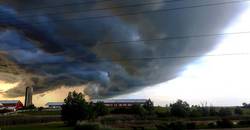
Via Instagram
- Mammatus Clouds - chances of a foul weather approaching is 50-50.
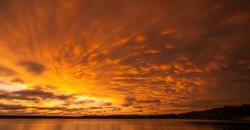
Via Instagram
- Cirrus Clouds – there is a possibility of bad weather after 36 hours.
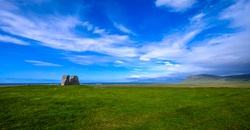
- Altocumulus Clouds – expect a foul weather in the next 36 hours.
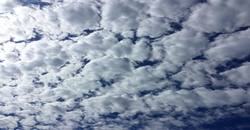
Take note that when you are camping in winter, and you see clouds at night, expect a warm weather on the morrow.
2. Animals and their Behaviors
Animals can predict a foul weather more than what you can. They can sense the movements in air pressure that are associated with changes in weather conditions.
Study these seven animals and their behaviors to foresee foul weather.

Animals
- Birds – Birds are the most common animals which behaviors can be associated with the weather change. If you see a flock of birds flying low in the sky, there is a low pressure or high pressure that’s causing them to feel uncomfortable flying high in the sky. When you see seagulls at the coast, there is a greater chance of storm forthcoming.
- Cows – They can become antsy, restless and they swat flies with their tails when they sense foul weather. Another behavior is they tend to seek a corner of the field and lie down to save a dry spot.
- Butterflies – When you cannot see any butterflies on the flowerbed, in their usual spots, then there is a storm or heavy rains approaching.
- Bees – Same with butterflies. When you can’t see them on flowerbeds, expect a foul weather.
- Sheep – When these sheep gather together, expect a foul weather. Gathering together means they are protecting each other from the bad weather they are sensing.
- Ants - Both black and red ants build up their mounds to provide extra protection. If you see ants molding their usual-sized house, expect a bad weather.
- Turtle – If you see turtles that are seeking for higher grounds, bad weather is approaching.
Discover more:
1. How to Use a Lensatic Compass – Guide on Finding Your Way in Nature
3. Wind and Waves
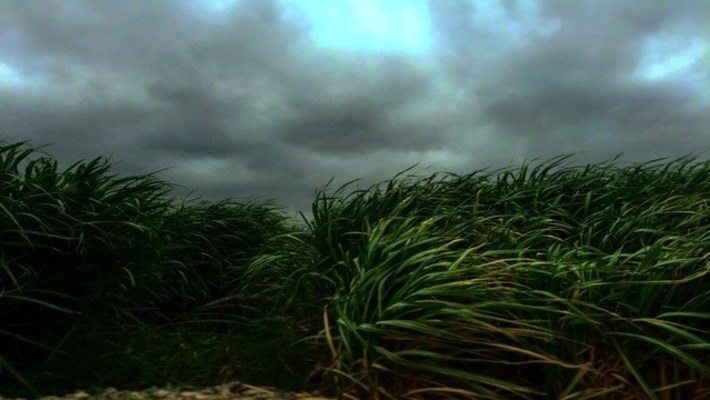
Yes, as backpacker, you can also feel the wind to predict a certain foul weather that is approaching near your area.
Whatever water forms you are near with, it is beneficial to check the cold breeze and rough waves, because these are signs that bad weather is coming forth.
The Canada’s Meteorological Service classified different kinds of wind speed as well as weather precautions.
There are five kinds of winds identified and three of which can be considered as a foul weather. These winds are:
Wind and Waves
- Light Winds – light winds can have a speed of fewer than 12 knots. Under this range, you can feel a light breeze, and you are ensured that you can expect a good weather in your camping.
- Moderate Winds – has a wind speed of 12 knots to 19 knots. Within this range, you can feel a gentle breeze, and the leaves and small twigs are in constant motion. It is still good to go camping in this range.
- Strong Winds – This condition is in the range of 20 - 33 knots. While is not an indication of a strong storm, expect heavy rains and a strong breeze. This strong wind can make some large branches to move, and your umbrella is hard to use.
- Gale Winds – Gale winds have speed within the range of 34 to 47 knots where you can see twigs that break off from trees. Under this wind, you can see big waves as high as six to nine meters in height. This indicates an unyielding rain with unyielding winds. This can be dangerous if you do not practice correct precautions. 41 to 47 knots can already cause structural damage.
- Storm Winds – Storm winds have a speed within the range of 48 to 63 knots. This storm is very potential to damage anything within its range. So if you are caught in this level of storm, practice basic precautions here.
Knowing how to read the wind can be very important when you go in camping. Strong, Gale and Storm Winds are not ideal for camping. So stay indoors as much as possible.
Other Tips
- Pay special attention to the West. Foul weather usually comes from the west part. But, you also need to know that storms coming out from the East are stronger than the west.
- Observe your neighboring people and communicate about the situation as necessary.
- Observe a sudden drop in temperature. This can mean that the storm is near your area.
- If you still want to camp amidst the forecasted foul weather, make sure that you bring waterproof bags, tarp and tent footprint, instant tent and other waterproof materials in your camping to ensure that you can function under the rain.
FINAL THOUGHTS
We can never really predict with certain accuracy how inclement weather can be. While it is true that we are aided with the information given by technologies such as computers, cell phones, televisions, radios, it is important to know the basics of how to predict and foresee weather conditions through observing changes in the environment – whether in the sky, animals, and winds.
Remember to use durable and waterproof materials as much as possible. Also, the technique like starting a fire with wet wood is very necessary. Take precautions and always practice safety procedures.
Do you like the post? If you have any comments or suggestions, feel free to give then in the comment section below, and don’t forget to share this article and spread awareness to save lives!

